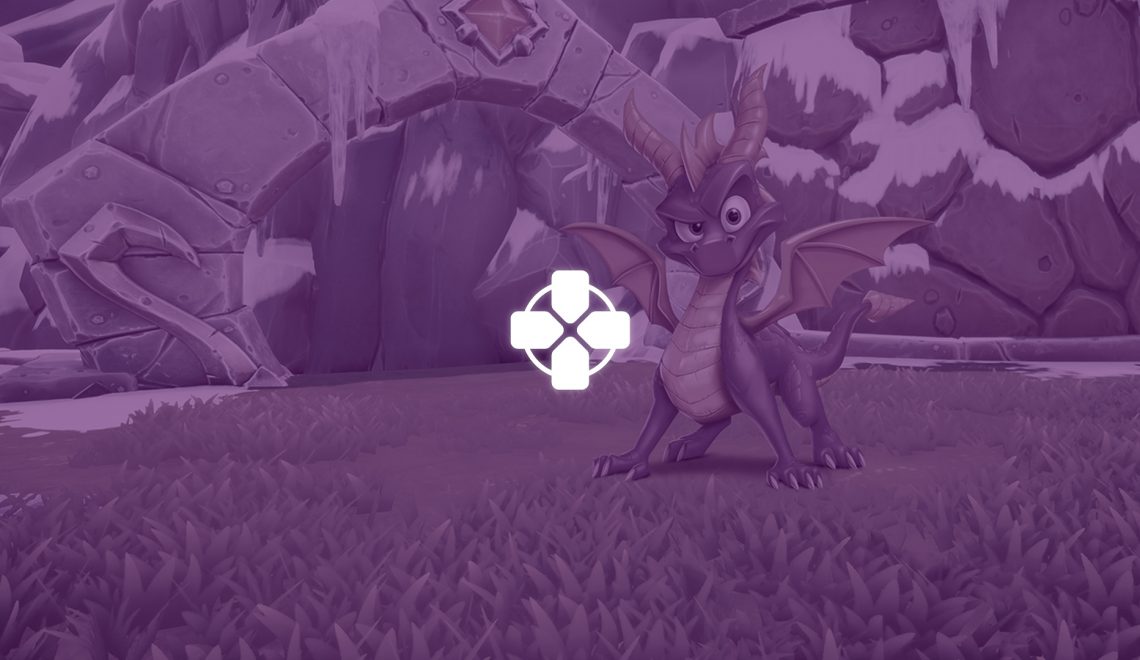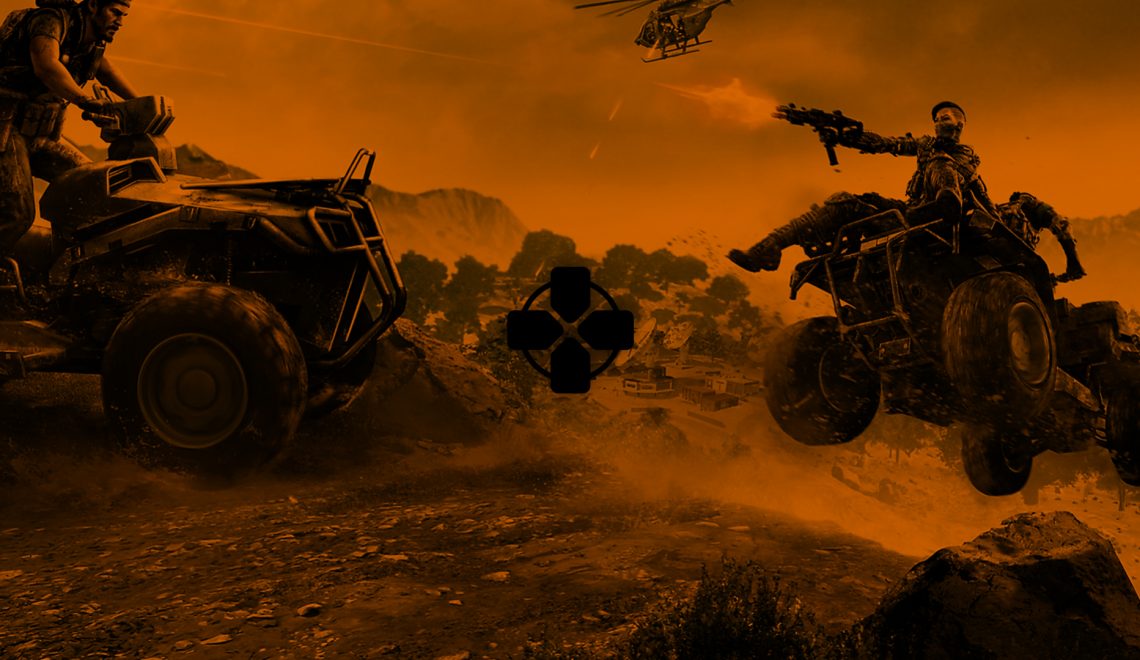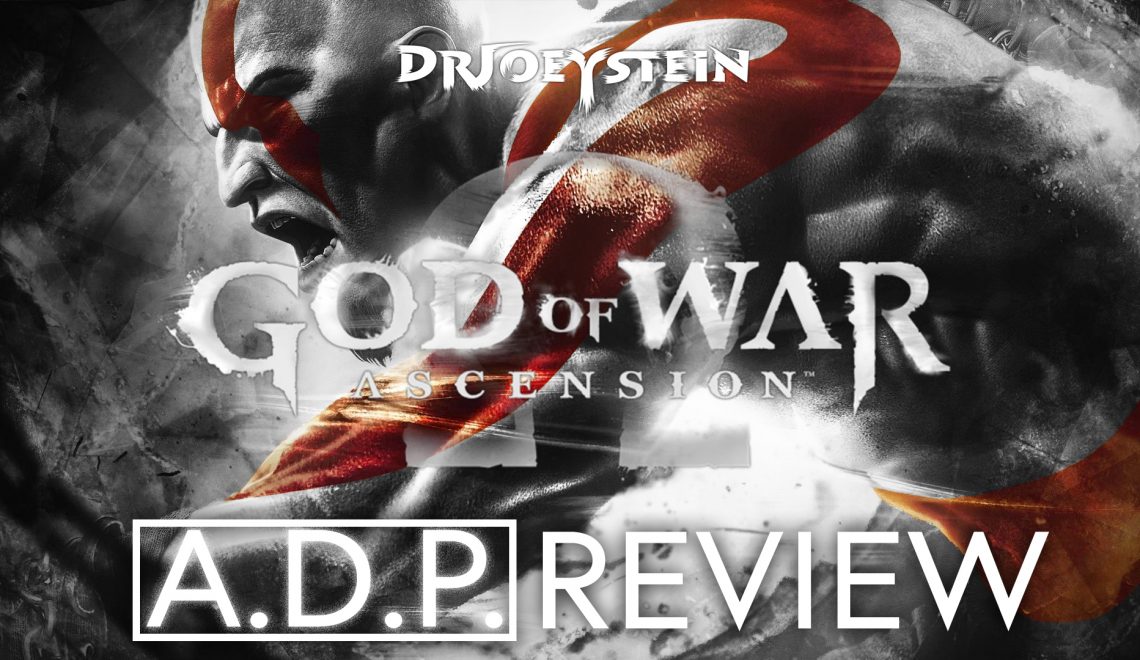This article was originally published on my Google Blogger website.
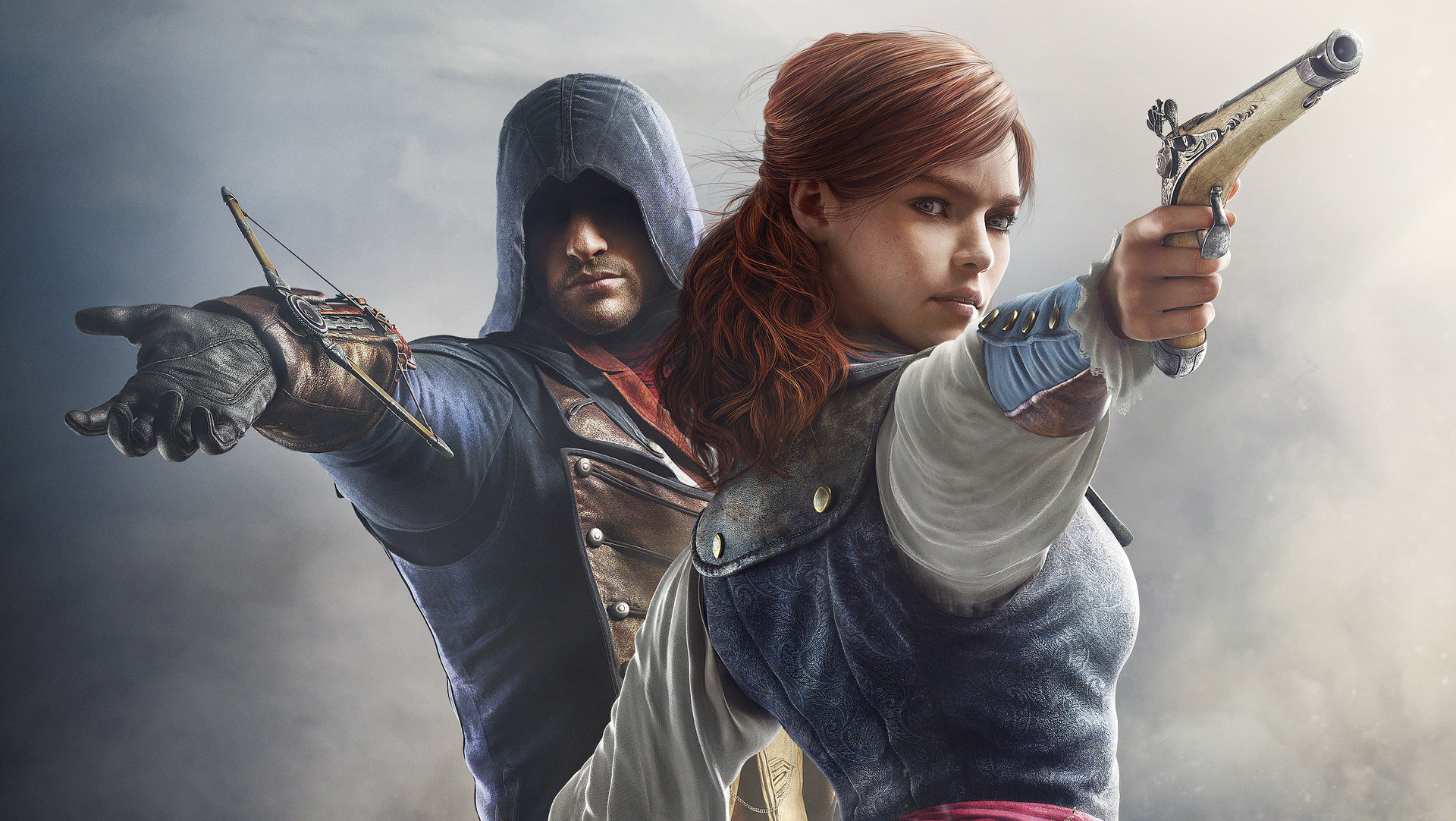
I hate getting into arguments.
Well, if they’re arguments that don’t need to be had, that is. Take Internet debates, for example. Those can (and usually should) be avoided since you’ll rarely change someone’s mind about anything. Instead of making actual progress, these usually serve to waste each involved person’s time. Me? I prefer to skim over what everyone’s talking about to see if there are any good points made, examples brought up, or even friendly, humorous banter to chuckle at. That’s less time consuming and stress-free. Besides, this kind of argumentation normally creates unnecessarily heightened emotions, too, with people resorting to eye-rolling insults and demeaning vitriol. It’s upsetting, dividing, and embarrassing, which is why I rarely participate in it in any manner.
With my blog posts, the last time I remotely entered a heated topic was with my 2012 article “That Blog Post About Violence, Sex, and Language in Video Games.” Apparently a lot of readers enjoyed that piece, so I’m back into the ringer as a white guy who’s obviously more than qualified to speak on an issue involving the representation of women in video games. Right? Right.
For starters, it’s something that I’ve wanted to have my say on for a long while, but have kept to myself for a while. I also believe that you, my lovely reader, might just be one of many who are tepid of casting your opinion on this into the ravenous wilderness of the Internet. Hopefully I’ll speak clearly on your behalf. Lastly, I represent what’s regarded as the current majority of the gamer demographic, who just wants to write about what he’s observed and learned about something in regard to the representation of women in games.
Voice your thoughts, concerns, and rebuttals for or against what I’ll be saying; I enjoy healthy, constructive, and well-mannered conversations because – for all I know – you and I might learn something. However, if you think I’ve been talking about the video game representation of women as though I’ll be covering it as the theme of this post, that’s incorrect. No, all of what I’ve said above actually pertains to a single issue surrounding a particular game I want to target and discuss with the video game representation of women in mind. That issue, of course, is the exclusion of female characters in Assassin’s Creed Unity’s co-op mode (I guess this should be called “Assassin’s Creed Unity & The Inclusion of Women in Video Games” then, but oh well). With that, let’s begin.
Unity’s existence may have been announced before E3 2014, but the real reveal of the game was done there, and it was a spectacle to watch the footage on and details about it unfold during the conference. This new Assassin’s Creed title is played through the eyes of Arno Dorian during the thick of the French Revolution, which is a most befitting time period and event for the history-trotting and globetrotting franchise to exploit. Being built exclusively for the PS4, Xbox One, and PC, Ubisoft has made it clear that Unity is going where no AC has gone before in terms of open world scope, graphical fidelity, gameplay, content to explore, and more. Gameinformer’s online coverage has only just begun, but have you seen the 11-minute interview that addresses how the gameplay is being designed? All of the development teams involved started from scratch, reworking the AC formula through a new engine with fresh animations, physics, game mechanics, graphical power, features, and so forth. For example, Ubisoft claims that the Notre Dame cathedral in Unity is nearly a 1:1 scale of the real structure, which took a full year to create (as to how many people worked on it is not clear, but this fact is nevertheless noteworthy). The ways in which you can traverse Paris, how NPCs react to your presence, what possibilities await in tackling missions with various methods…this game seems to be pushing what the new generation of consoles are capable of, and since this is Ubisoft’s first attempt with a next-gen AC (Black Flag doesn’t really count, just to point that out), it’s undeniably impressive what ‘s being accomplished here. And if I had to sum up what the primary goal and philosophy was from the beginning of making Unity after hearing and reading so much about it, I’d say it was to truly “wow” players in what they can do and what they’ll see. There was no room for cutting corners or letting things slide, but to design each and every aspect of the game’s primary elements to the most intricate detail with intense care. This plan must have been laid out in the early stages, and once it was followed, compromises had to be made for the main vision at hand, for better or for worse. But hey, that’s just an educated guess.
Let’s not forget about the unity that co-op brings! This is the titular selling point of the game, which was something that became joyfully possible with the advent of the PS4 and Xbox One. It’s a separate mode from the single-player that has taken the place of the competitive multiplayer we’ve come to expect since Brotherhood, due to Unity’s focus on providing a “shared” experience with specific game mechanics and whatnot being built around that goal. So, you get to play an undisclosed amount of missions specially made for 2-4 players to conquer. They get you right into the action, require teamwork to complete (no lone wolf business here), and even advance the Assassin’s brotherhood portion of the story alongside Arno’s personal journey in single-player. I was never fond of the competitive multiplayer despite my large interest in the AC games, but this co-op has got me listening and very, very interested after my brief hiatus from the series with the disappointing AC3.
We’ve seen the co-op in action and heard about what it’s doing to change AC, but there was a question primarily raised by a couple of game journalists: can you play as female characters? Up to that point, all of the footage had been of male Assassins and the box art had four male Assassins on it. Ubisoft responded with multiple answers.
Creative director Alex Amancio spoke with Polygon saying that female characters were going to be added, but “the reality of production” prevented them from doing so. “It’s double the animations, it’s double the voices, all that stuff and double the visual assets, especially because we have customizable assassins. It was really a lot of extra production work.” He goes on to say that “the common denominator [had to be] Arno. It’s not like we could cut our main character, so the only logical option, the only option we had, was to cut the female avatar.” Level designer Bruno St-André also told Polygon that 8,000 animations would have had to been created due to the different skeletal structure of the female body. “We started, but we had to drop it. I cannot speak for the future of the brand, but it was dear to the production team, so you can expect that it will happen eventually in the brand.” And technical director James Therien said in an interview with Videogamer, “It’s not a question of philosophy or choice in this case at all… it was a question of focus and a question of production. Yes, we have tonnes of resources, but we’re putting them into this game,” he said, “and we have huge teams, nine studios working on this game and we need all of these people to make what we are doing here.”
Responses like these didn’t mitigate the concern, but frustrated the journalists who asked them and downright enraged thousands upon thousands of gamers. The reasoning behind this is that it seems as though adding female characters was an afterthought; it’s something that would’ve simply been a nice bonus to have rather than something that was as essential as having the default male character Arno. In other words, it’s lazy and not important enough to pursue with extra resources, time, or even a delay. Jonathan Cooper from Naughty Dog, who was the former animation director on ACIII and Mass Effect 1 and 2, points out that the animation is not an issue, citing that male and female characters of past AC games share the same general motions. The same goes for Commander Shepard’s female counterpart, FemShep, in the Mass Effect games. Why couldn’t have Ubisoft Montreal – with, as Therien said, nine additional studios that are helping make Unity – do this? The teams couldn’t convince their publisher to provide them with a bit more time and resources to work on female characters, especially when gamers, developers, and publishers should be more sensitive to the factual overabundance of white male protagonists by now? It’s something that The Last of Us’ Ashley Johnson, who mo-capped and voiced Ellie, expressed disappointment over.
In a nutshell, the general consensus is that Ubisoft has displayed elements of misogyny and indolence in going this route. Is that true?
Amancio responded to these cries, saying “I understand the issue, I understand the cause, and it is a noble one, but I don’t think it’s relevant in the case of Unity,” he told Eurogamer. “In Unity you play this character called Arno, and when you’re playing co-op you’re also playing Arno – everybody is. It’s like Aiden Pierce in Watch Dogs.” He later says, “I think this started from confusion in relation to the co-op, where [people] thought it was an avatar which it isn’t. Arno has different skills – you select skill points in the game, there are gear elements that have an impact and all these weapons that make the character you make your own. But you’re always playing Arno.”
Finally, he goes on to point out a relevant point on what Ubisoft has done with past AC games in regard to diversity, which the publisher officially mentioned as well in response to the controversy. It doesn’t really count as an excuse, but there’s weight and importance to it nonetheless. “We’re following in that tradition [of diversity], and we’ve found a way to add co-op,” Amancio says.” On the brand we’ve had multiple diverse characters. Altair is Arabic, Connor is Native, we’ve had a female lead. This game is set in the French Revolution, so you’re playing a Frenchman. […] The team members are here, they work really hard and we take them as spokespeople as we want the answers to be real. These people aren’t professionals, and sometimes they slip up. It’s fine,” he said. “We focus on what we’re presenting that’s cool – again, I just don’t think Unity applies to his subject matter.”
That’s pretty much all of the important comments made on the side of Ubisoft and those who’re calling the company out. I’ve read them several times and learned much from commentators across the Internet (some of whom are in game development), and it’s needless to say that both lines of opinion have merit and shine insight onto what’s the deal here.
So, for those who say that Ubisoft is completely justified in its position, I’d say you’re wrong. If you think the company’s blatantly discriminatory and misogynistic toward women with Unity, I think that’s incorrect as well. As I said, my opinion on this issue isn’t your typical one because this whole thing isn’t black and white as people make it out to be.
Let’s start with Amancio’s reasoning in regard to the “reality of production.” He talks about how it would be extremely involving to create a female character model. If there’re 8000 animations (for combat, parkour, stealth, etc.) for Arno, imagine how long it would take to do a female character model if the developer wants it to stand out from the way Arno moves. But like Cooper said, this would only take a matter of days if Ubisoft wanted Unity’s developers to do it. He also gives more reasons as to why this is possible in this Polygon interview. However, I think he misses some key points in his comments. With a game like Unity on the PS4 and Xbox One, the graphical fidelity is several leagues above AC3 and even Black Flag’s visual quality and production values. The massive budget has already been set for the game, the release date is finalized, there’s legitimacy behind why you only play as a male (I’ll get to that later), and the mission for Unity – as I pointed out earlier – is to build it from the ground up with no compromises in quality. Although MaleShep and FemShep, Connor (from AC3) and Aveline (a female Assassin from the Vita title AC: Liberation), and even male and female characters from the Dark Souls series share a vast majority of animations, the extra work required to make this possible wasn’t a major deal and worked with those games.
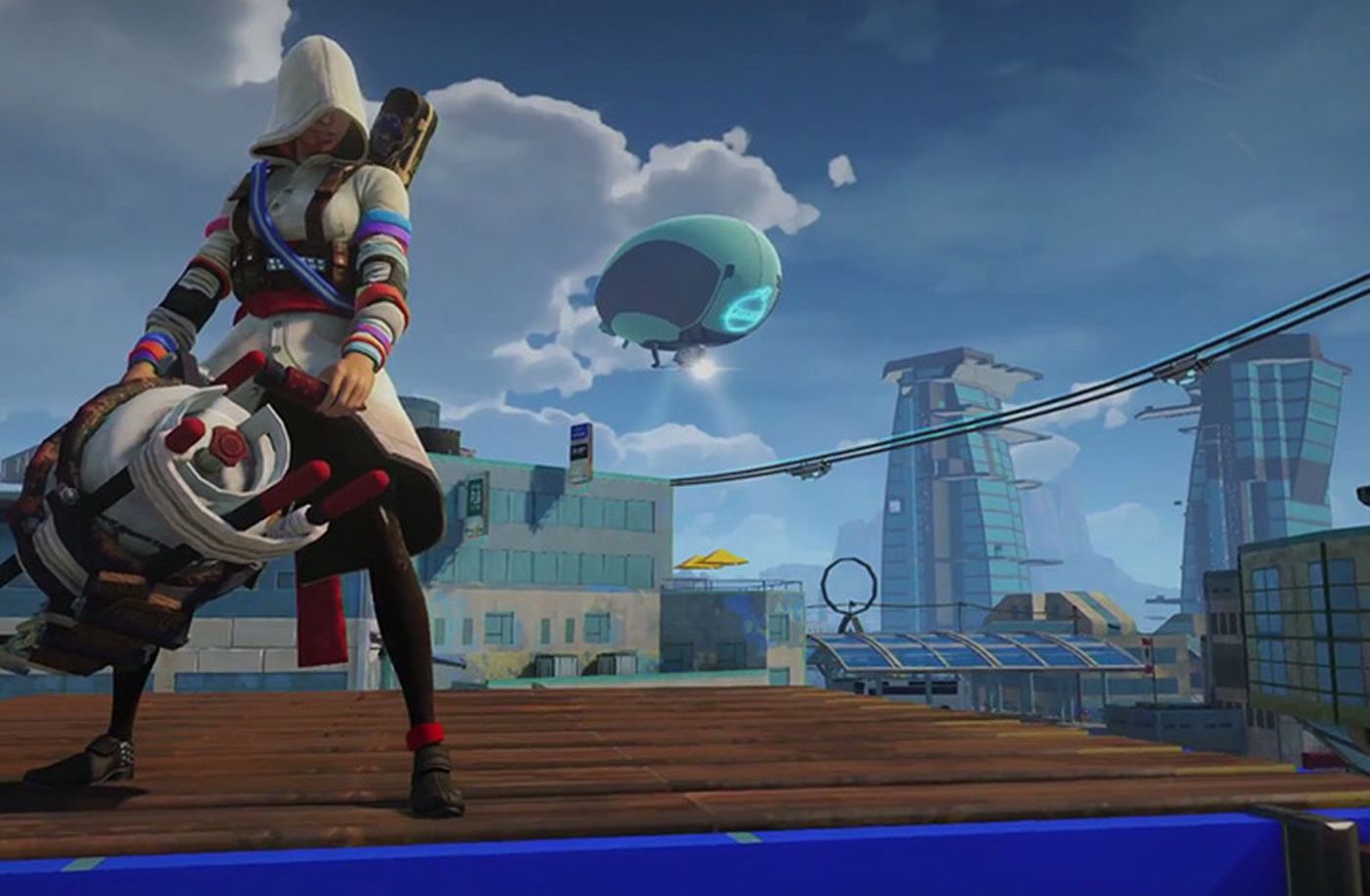
Insomniac Games (also known as “One of The Best Developers of All Time Whether You Like It or Not”) poked fun at Ubisoft by putting an Assassin-like character in its fantastically weird game Sunset Overdrive. Keep in mind though that one of the core appeals and key features of the game is heavily centered on character customization, including unisex clothing, different body types, etc. That was ruled out due to design and direction concerns from the beginning with Unity since it’s naturally a more complex game with its photorealistic graphics, huge, detailed world, and so forth.
Unity isn’t like its predecessors, Mass Effect, or Dark Souls. I’m no animator by any stretch of the imagination, but creating female characters for a franchise that takes great pride in its precise, in-game animation isn’t as simple as “change a few key animations and alter the skeletal frame a bit.” For Unity, doing this would likely prove disastrous considering how intricate and meticulous the game’s world and characters are. I can’t imagine Ubisoft would need to make 8000 new animations, but it’d be in the thousands when taking the female body’s average height, body dimensions, skeletal structure, and movement into account. And if you want to be even more accurate, women would probably have a significant amount of varying combat/stealth techniques and (this is a educated guess, so correct me if I’m wrong) different parkour moves as well. Cooper said in that Polygon article I linked that there would be less quality in the female character models if they were made for Unity starting now (I, for one, think it would be impossible at this point though). While some people might not mind, Ubisoft does because that would goes against what it’s trying to accomplish with the game in every area. You go for the best or don’t do it, and that’s why the line has been drawn on adding women to co-op; it would certainly degrade several aspects of Unity.
Others say that with so much money in its pockets, Ubisoft could easily delay the game to make these female characters a reality. While the company does possess oodles of cash, Unity has budget restrictions and specific resource allocation like any other game in development. It’s not as simple to delay or do something extra for a game just because it’s in AAA development. There’s a reason why the game is releasing on Oct. 28 this year. There’s a reason why Ubisoft is releasing 1-2 AC games on a yearly basis (Rogue and Unity make sense because we’re still in transition between last-gen and current-gen). There’s a reason why nine studios are collaborating on making Unity the best it can be.
There’s a lot of money at stake here and each decision in regard to this game’s development has been planned out. It’s a business, and delaying a game’s release while pouring another $300,000+ (at least) into development – which would contribute to getting the audio, animation, art, casting, and other departments to do female characters – would be a risky move. Female characters are ever so vital and make games richer when they’re present, yes, but this – or nearly any other issue that could be compared here – is not worth delaying a game over. Some may call it “putting money over women” or female discrimination, but under the circumstances at this point in time, I don’t think that’s a fair thing to say. Besides, Ubisoft Montreal’s employees have expressed genuine regret and disappointment over not being able to incorporate female characters. The team has deadlines and restrictions to adhere to, and you can’t blame them for doing what they did. After all, remember when I said there’s an explanation for only playing as the male character? Amancio’s interview with Eurogamer reveals this point.
I don’t really need to repeat what he said, but I’ll extrapolate on it so his point is clear. A lot of people didn’t (and some still might not know) that you play as Arno. Always. In single-player or co-op, there’s no difference or disconnect in what he’s wearing and how he looks on your screen. It’s not like, shall we say, Call of Duty: Ghosts, where you have an avatar template – either male or female – that you can customize with different faces from different races (hurray for rhymes!). It’s completely separate from the campaign with characters you can’t change or even see.
With that mediocre example in mind, it’s the complete opposite for Unity. Of course, everyone in co-op doesn’t look the same. That would be disastrous, wouldn’t it? Players may perceive their Arno the same way you do, but every other player you see has varying facial features and outfit colors (e.g. you and someone else may have blue outfits, but everyone sees you in green and the other person in grey). This separates everyone well enough without going overboard. Why do this? As Amancio said, “you select skill points in the game, there are gear elements that have an impact and all these weapons that make the character you make your own. But you’re always playing Arno.” In other words, players get to see your Arno, with the unique weapons, gear, and armor you apply to him in the single-player campaign. There’s much more meaning to this than the example Amancio provides with Watch Dogs, where – with the multiplayer – everyone perceives themselves as Aiden, but everyone looks different to you. The only customization in that game consists of color differences in your outfit (from what I’ve seen), and no one can see that.
This is where we come full circle by discovering all the reasons why Unity didn’t add female characters. The game is designed to reduce loads of memory by having you only play as Arno, and if the avatars were separate from the single-player, this whole issue would have far greater justification in calling out Ubisoft. However, what you do in the campaign not only affects your co-op appearance, but the modes are linked up to continue Arno’s story in a sense because when you play co-op, you’re continuing another side of Arno’s adventures with the Assassin Brotherhood, so playing as a custom character would sever this concept unless the whole game were structured around creating a custom Assassin in the campaign, and boy, would that have required tons of work. You could argue that the game could at least allow other players to perceive you as a female (since recruited female assassins would assist you in Brotherhood), but where’s the fun in that? It sounds feasible, but if you can’t see yourself as a female, why bother?
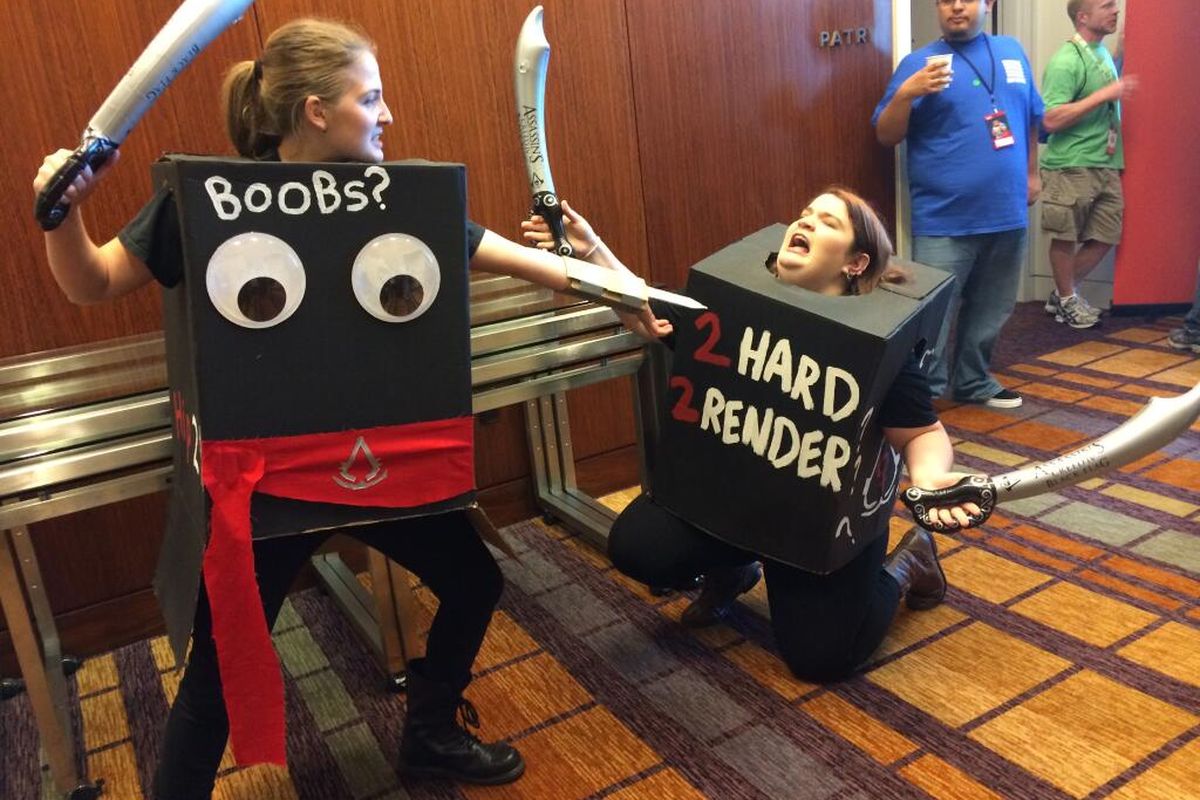
…All right, I don’t care what you think about this issue. This picture is hilarious as can be.
But here is where the big question comes forth, one that’s a matter of preference and belief. Should Ubisoft have compromised features or reduced the quality of other sections in the game to accommodate the inclusion of female characters?
You may think so. You may not. I personally wish Ubisoft Montreal and the assisting developers had focused a bit less on things like the Notre Dame cathedral I mentioned earlier to add playable women, but all of us have to understand that there was a vision for the game from the beginning. From all of the gameplay demonstrations and advertisements of Unity over the past few months, there’s a common message that’s being communicated that’s the guiding philosophy behind the game’s creation. To paraphrase, Unity’s purpose is to create a living, breathing game world that impeccably captures the atmosphere, time period, culture, and architecture of 18th century Paris, France. To me, it starts to make more sense why female characters were cut with this in mind. To achieve that objective, stuff had to be cut (like the popular competitive multiplayer) and condensed, which also explains why Arno’s character and story are connected with the single-player and co-op. Unity would be noticeably different in its design and quality today if that weren’t the case, and since AC is very well known for its wide diversity in strong characters of different races and cultures (whether playable or not), I can see why female characters had to be cut this one time from co-op since Unity is new territory for the franchise.
After all, let’s look to the future. “[Playable women were] dear to the production team, so you can expect that [they] will happen eventually in the brand,” as St-André said. In addition, the game already has an awesome-sounding female Templar who’ll play a key role in the story and hopefully more to come. Although I might not be as disappointed as you are in the lack of female characters, there’s plenty of reason to look forward to Assassin’s Creed Unity and the women who’ll be in it. Who knows? Perhaps Ubisoft Montreal will find a way to add quality female characters to co-op via DLC. If that can be accomplished, there’s more of a reason to believe that representation is one of its main priorities, but if not, okay. It can slide this time with me.
Now, if the next AC comes around and there are no women to be seen in co-op, we’ll know Ubisoft doesn’t understand the purpose and meaning of consumer feedback. Sure, the developers and/or publisher can decide if they want to make room for other stuff instead, but the company will face warranted consequences the second time around if they do that.
Perhaps I’m thinking about all of this wrong. Maybe Ubisoft is completely in the wrong and lazy in not representing women in Unity’s co-op. The problem is that none of us outside of Unity’s development will ever know for sure. The team members’ comments may be genuine as to why they did what they did, and according to other developers (in this article that’s actually about Call of Duty: Ghosts), adding female characters really does take up a lot of space if it’s going to be done right. But they might not be telling the complete truth. I’ve only analyzed the situation and evidence to the best of my ability.
In addition, here’s something real quick that you need to hear. I think it’s pertinent to put out there, even though I could write a whole separate post on the topic.
My Two Cents on Women in Video Games and the Game Industry
I’ve got to add just one more thing. Having more playable women in video games is a wonderful thing. Red in Transistor, Ellie in The Last of Us, Lara Croft in Tomb Raider, Samus in Metroid…do I need to continue? I adore playing as these characters when I can because they’re a fresh change from the usual male characters. Just as men are wired and built differently than women, female game characters can add so much more to games than men alone can. I love the dynamic that Cortana brings in her interaction and relationship with Master Chief; I enjoyed watching Lara Croft grow in her resolve and determination as a character in Tomb Raider, and Zelda’s entertaining, meaningful role in the story and gameplay of Spirit Track’s easily makes it one of the best reasons to play it. Whether playable or not, I’ve always appreciated how female characters can have a profound effect on how much I like a game. They make for richer experiences that more people can enjoy? What’s not to like about that? And as Joe Vargas said, there’s room for games with women that have huge boobs and revealing armor, male power fantasies, and – although I personally avoid games with this when I can – senseless sex. A lot of men (and even women) find fun in these kinds of games. That’s fine. But wouldn’t it be better if we had games with more women that are portrayed more realistically and modestly, written more intelligently and creatively, and that – either playable or not – have compelling roles in a story or with gameplay? Bring them on.
Spirit Tracks has become one of my favorite Legend of Zelda titles just for how innovative its story and meaning behind the gameplay mechanics are for the franchise. It’s a shame no one ever talks about the game or Phantom Hourglass to boot.
And women in game development? I personally think that men are simply more interested in the field than they are, which explains their overwhelming presence after all these years (e.g. from my observations, about a quarter of people pursuing the Interactive Media and Game Design major at my university are women). But there are certainly more that want to enter the field today, and I say bring them on as well. If a woman has better qualifications than a man for a position with a developer/publisher (or vice-versa, if that’s the case), then she should be hired immediately. There should be no workplace discrimination, decrease in pay, or attacks made on a woman just because of her gender in this field. We have people to thank like Amy Hennig (former Naughty Dog storywriter), Jen Zee (artist at SuperGiant Games), and our own Kimberley Wallace (Gameinformer editor) for bringing us quality games and games coverage that have entertained many gamers; their hard work and talents are just as valuable as anyone else’s. The same can be said for any other talented, passionate women that want to be in the game industry, who should be welcomed with open arms by everyone.
With that out of the way, what did you think of this extensive post? I put a lot of research and work into it, so I hope you learned something from and enjoyed it. What do you have to add to the conversation? What are your thoughts on the lack of playable women in Unity, and on the video game representation of women in general? By all means, comment below and spread this article around if you think others should read it. Thank you for taking the time to read this and have a great day.

